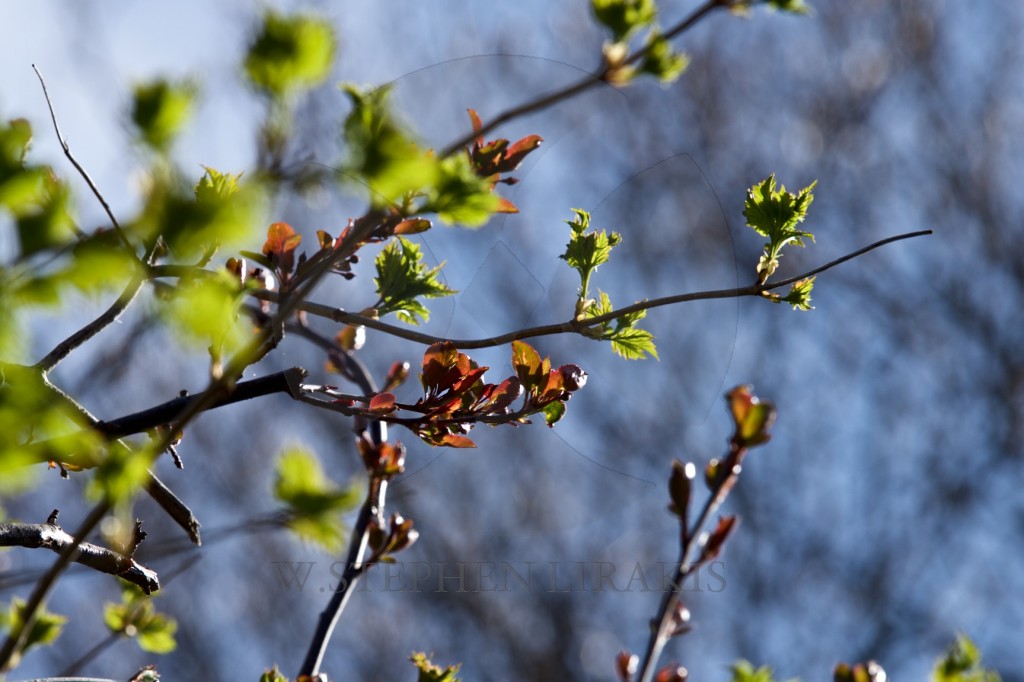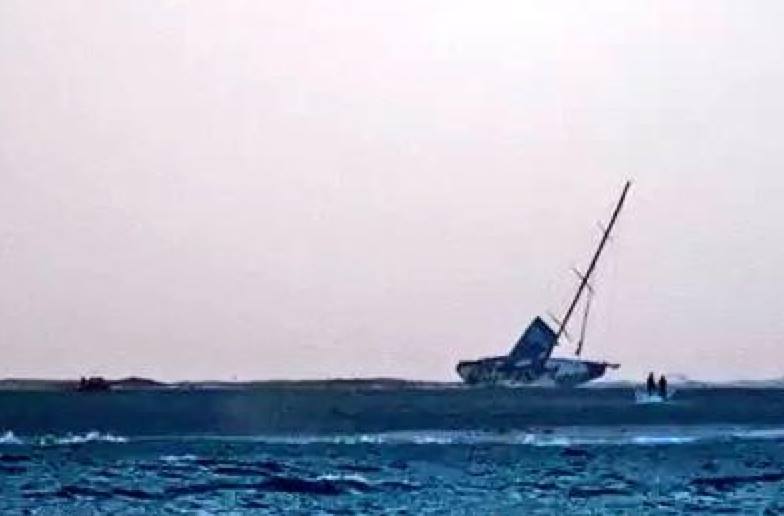A peaceful sunday drive while the volvo ocean race set off for portugal, a 6-7 day race for these boats.

A peaceful sunday drive while the volvo ocean race set off for portugal, a 6-7 day race for these boats.

It was not very long ago none of us in New England thought we would ever see spring; or if we did it would be with piles of snow everywhere. All of this is so easily forgotten with the long warming days of sunlight. Even more resounding is nature’s delicate return as unrelenting as winter’s cold.
On another note the Volvo Ocean Race is due in Newport May 7.


What a difference a day makes. The headlines yesterday were pedal to the metal. Today dismasting. Heavy weather sailing is about knowing when to ease off the pedal.
Volvo Ocean Race can confirm that Dongfeng Race Team broke its mast early on Monday (GMT, March 30) but fortunately nobody has been injured and there is no immediate danger to the crew.
The incident happened 240 nautical miles west of Cape Horn at 0315 UTC on Monday, in the final hours of the night onboard Dongfeng.
The crew reported that the mast broke above the third spreader, the top section of the mast. They are not planning to continue racing on this leg and are heading towards Ushuaia, Argentina, under their own sail.
Reached via Inmarsat, a disappointed skipper Charles Caudrelier said: “I’m gutted. As you’ve seen from the position reports we have been, on purpose, backing off a bit, not attacking in any way.
“The mast broke without warning, in about 30 knots of wind. We are unable to sail safely on starboard tack, but we are able to make reasonable speed on port tack. We will head towards Ushuaia and assess our options for getting to Itajaí.”
The Maritime Rescue Coordination Centre (MRCC) is aware of the situation and is on standby to help if necessary.
We are in constant contact with Caudrelier and are establishing the full extent of the damage to ensure we give him the support he needs to deal with the situation.
|
Ears pinned back and foot to the floor (March 29, 2015; Day 13) – The Volvo Ocean Race may be a marathon, but at this stage of Leg 5 from Auckland to Itajaí, it’s pretty much a 350nm sprint east to Cape Horn. With winds from the northwest, the boats have now gybed their last gybe and stacked their last stack. Their ears are pinned back and have their foot to the floor, as the 30 knot winds and 2.5 to 3-metre waves are allowing the teams to see what the VO65s can do. “Now that we’ve all more or less settled in for a long port tack run to the east the big question on everyone’s mind is just how hard to push,” reports Amory Ross on Alvimedica. “If there’s anything we’ve learned so far this race it’s that the leaders aren’t afraid to redline the revs when challenged.” Apart from SCA, the entire fleet – separated by 20 nm between Donfeng to the north and Abu Dhabi to the south – has covered more than 500 nautical miles in the last 24 hours, with the top five averaging over 20 knots as they fight for the lead. But Ross reminds that trophies aren’t determined at Cape Horn. “We feel fast, as fast as anyone, and when you feel fast nobody wants to slow down because in the back of the mind we’re telling ourselves we can be first to the Cape,” observes Ross, with Alvimedica positioned to the north. “But this leg will be decided along the coast of Brazil, and if we push too hard now we may never give ourselves that chance.” Pulling the throttle back may occur soon as the sea state is about to get rough. Waves are expected to build over the next 24 hours as the sailors get closer to the continental shelf – and Cape Horn. As for SCA, with no fractional gennaker after damaging it earlier this week, they simply can’t match speed with the fleet. Forced to use the smaller J1 jib, they are suffering for speed and angle and, with reduced routing options, will continue to fall behind the pack now. Leg 5 (6,776 nm) Position Report (21:40 UTC) |
HARD SAILING IN THE SOUTHERN OCEAN. IT IS WHAT YOU SHOULD EXPECT.
“Nico’s out over the other side of the reef now, giving it the once over, making sure there’s nothing left behind.”The Aussie voice crackling through the Inmarsat iSat phone is that of Team Vestas Wind shore manager, Neil ‘Coxy’ Cox.
“I’m sitting here and the sun has just disappeared on the horizon,” it continues.
“And the ship that we’ve just loaded on to is probably about seven or eight miles away from us now.” Incredibly, the Team Vestas Wind boat is off the rocks – damaged – but in one piece.
Not bad for a boat which ran into the reef in St Brandon at 19 knots (35kph) and ended up grounded, high and not very dry, just over three weeks ago.
You can almost feel the trademark Coxy grin down the line as he recounts the events of a momentous few days’ work.
“We were able to get the boat across the lagoon this morning on the high tides, and it went well enough that we could pull it straight out of the lagoon,” he adds.
“Then, we were able to bring a Maersk ship in, not even a mile away from where we were – it showed up at about 2pm this afternoon.”
“We loaded the boat at about 5pm tonight.”
Three hours, 180 minutes. It seems like a pretty short amount of time – but it was a tense few moments for Neil, skipper Chris Nicholson (Nico), and the local workers.
“We spent the last three days getting this boat off this reef – it was beyond delicate,” Coxy admits.
“We have a pretty well-rehearsed method of picking these boats up – but everything that we would normally just set ourselves up for, we had to think about it, look if it was okay, and then acknowledge that certain things just weren’t.
“We had to bounce slightly and re-invent the wheel, we just needed to be very careful and just make sure that we finished the job swiftly.”
It was a job which was always going to be fraught with difficulty – but even more so after three days of working around the clock to clear the area and ensure the structural integrity of the boat.
“We’ve been really lucky that from the minute the incident happened, we’ve developed a relationship with the guys who actually live on the island here,” he says.
“We’ve employed the workforce that already exists out here, and without it we couldn’t have done the job, full stop. There’s probably a work force of 10 guys.” “They’ve been standing knee deep in water with waves hitting them all day, they’ve been carrying oxygen bottles for us to be able to cut the keel off, they’ve been helping us re-anchor the boat otherwise things would start moving across the reef.
“They’re fantastic.”
Pure relief flavours his words. This is a major step, complete. And it’s been an incredibly charged emotional rollercoaster for the pair of old friends, Coxy and Nico.
“I think when we initially motored back out there a couple of days ago, there were butterflies in the tummy. For me it was going into the unknown.
“Fortunately you’re so involved in this that your mindset is on really wanting to get this done, and do it right. We came here hoping to be able to get the boat off the reef and hopefully be able to bring the boat back, so that nervousness kind of subsided with focus.”
The next step? “Well, it’s now a 28 hour motor to get back to Mauritius,” says Coxy. From there, they’ll transport the boat to Malaysia and then to a destination yet to be confirmed in Europe.
“We’re just getting everything tidied up tonight and leave probably about 3am in the morning.”
And what about looking a little further ahead? Well, Coxy is still cautious – but hopeful.
“A week ago the light at the end of the tunnel was getting smaller and smaller, but what we’ve been able to retrieve off the reef is substantial.” He pauses. “I’m not going to say it’s great by any means, but it’s the first stepping stone, and it’s enough to shine a light and to work hard to put things back into place. “
The unshaven, exhausted, uninjured team were holed up, incommunicado, for three days in the remote archipelago after their boat ran into the reef on Saturday afternoon at 1510 UTC.
“I’m really disappointed of course,” said Chris Nicholson, their 45-year-old skipper from Australia, shortly after arriving at dockside in Mauritius.
“On the other hand, we have to realise how fortunate we are for everyone to be here in one piece, and to be healthy. It’s pretty amazing, so there’s a lot of emotions at the moment.”
“The past four days have been very challenging for all of us, and I am extremely proud of the whole crew’s professionalism, composure, and endurance.
“It’s clear that human error is responsible for the shipwreck, there’s no avoiding that. And as skipper, I take ultimate responsibility.”
They had smashed into the coral rock at 19 knots – the equivalent of 35 kilometres an hour – in their 65-foot boat, spun 180 degrees and crashed to a halt, grounded on the reef.
They remained on the reef until the small hours of the following morning, before abandoning the boat in pitch darkness and wading in knee-deep water to a dry position on the reef, led by Nicholson – aka Nico.
A small boat from the local coastguard then took them early on Sunday to a small islet, Íle du Sud, which is known as a favourite with shark-watching holiday-makers.
Their blue vessel, caught underneath breaking waves, is badly damaged, but the crew decided to remain for an extra 24 hours to complete a clean-up operation around the area.
“The bad things had to come off,” said the skipper, having just stepped off the local fishing boat, ‘The Eliza’, that transported his crew back to the mainland.
“We had a clear list of removing that equipment, and once we had all those off the boat it came down to removing things that were expensive.
“We’ve done a really good job in clearing it all up.”
Experienced New Zealander sailor Rob Salthouse was also keen to focus on the positives.
“It’s just good to be back on dry land,” he said.
“I think the team has grown strong with what we’ve been through.”
Danish sailor Peter Wibroe, white shirt stained yellow by sand, sweat and sea salt, was full of admiration for his leader.
“I must say that the team worked really well together, especially Nico, the skipper, who led the whole situation in a very professional way.
He continues. “We all felt extremely safe despite the situation.
“We were conscious about what was going on and we all had our responsibilities.”
“We worked really well as a team, and that’s why we’re all here today.”
There is no way to ease the disquieting events of the last 24 hours in the Volvo Ocean Race, with Team Vestas Wind going hard aground and abandoning the boat.

At 1510 UTC, Saturday, November 29, Team Vestas Wind informed Race Control that their boat was grounded on the Cargados Carajos Shoals, Mauritius, in the Indian Ocean. Fortunately, no one has been injured.
We are in contact with the boat to establish the extent of the damage and ensure the crew is given the support needed to enable it to deal with the situation.
The Maritime Rescue Coordination Centre (MRCC) in Reunion Island is aware of the problem.
The crew has informed us that it is currently grounded on a reef but nobody is injured. Volvo Ocean Race and Team Vestas Wind’s top priority is to make sure the crew is safe.
The crew has informed Race organisers that it now plans to abandon the boat as soon as possible after daybreak.
Team Alvimedica and two other vessels are in contact with Team Vestas Wind to assist.
We will give you more information as it becomes available.
Team Alvimedica Navigator Will Oxley shares this update from on board:
We are in contact with Vestas every 30 minutes on VHF radio whilst we wait for dawn at which time the local coast guard should be able to help effect a rescue. Meanwhile I am sure it is great for them to know we are standing by and ready to intersect their life rafts when they reach deep enough water for us to safely navigate in should they abandon at night.
Our sails are down and we are motoring back and forth on the lagoon side of the reef remaining as close as possible to the crew of Vestas Wind while they require assistance. We cannot get closer than about 1.8 miles to them because they are hard on the reef but in the event they abandon to the rafts we may be able to help with recovery. We may also be required to help after rescue but we await advice on this.
For all practical purposes we are no longer racing towards Abu Dhabi for now, but we have not suspended racing. However, in accordance with the laws of the sea, and Racing Rules of Sailing Fundamental Rule 1.1 we are standing by Vestas “to give all possible help to any person or vessel in danger.”
The guys on Vestas are our mates and many of us have sailed 1000’s of miles with them. We will remain with them as long as it is possible we may be able to help.”